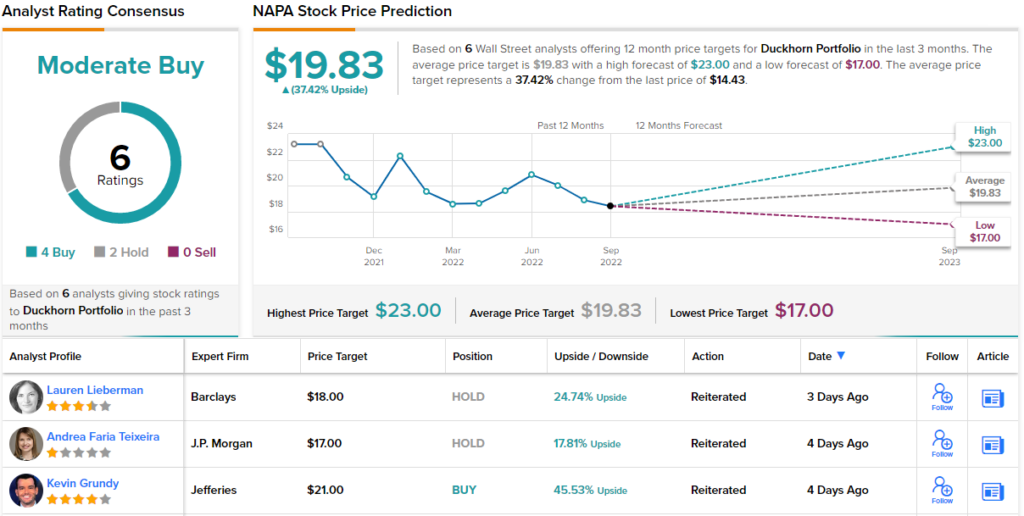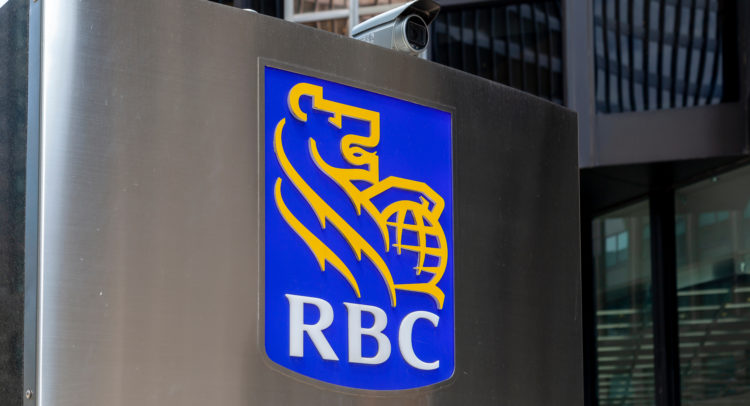Last month, the Federal Reserve implemented its third 75-basis point interest rate hike in a row. The move was made in response to continued high inflation; annualized inflation remained elevated, at 8.3%, in August, and the Fed is committed to a policy of higher rates and monetary tightening in response.
Don't Miss our Black Friday Offers:
- Unlock your investing potential with TipRanks Premium - Now At 40% OFF!
- Make smarter investments with weekly expert stock picks from the Smart Investor Newsletter
The risk, of course, is that higher interest rates will increase the cost of money, and increase the cost of doing business, which together with inflation will put a further squeeze on consumers and consumer spending – resulting in a recession. The risk is made worse by 1H22 data, which showed GDP contraction in both Q1 and Q2, the technical definition of an economic recession.
Is a full-blown recession imminent? That remains to be seen, although it might be prudent to prepare for one. In a recent note, addressing the potential impact of a recession on the consumer staples sector, RBC’s Nik Modi writes, “While there is currently still debate among economists whether the US economy is heading into a severe recession with job losses or just a technical one that can avoid extreme economic damage, we believe it is critical for both CPG companies and investors to think about the potential impacts on businesses and stocks.”
“In this context,” Modi went on to add, “we continue to prefer names with stronger pricing power (i.e., competing in categories where brands are more important and private-label penetration is limited), manageable cost inflation and FX risks, and greater exposure to higher-income consumers.”
Modi has pointed out names he considers as “top picks” in times such as these. We’ve opened up the TipRanks database and pulled up the details on two of his choices; here they are, along with Modi’s commentary.
Constellation Brands (STZ)
The first stock we’ll look at is a staple of the beverage industry, Constellation Brands. This company is the largest beer importer to the US market, and one of the largest beer suppliers by total sales. Constellation’s ‘core’ business in the importation of Mexican beer into the US; the company owns the US rights of the popular Corona and Modelo brands. In addition, Constellation has a varied portfolio of wines and spirits, including Casa Noble tequila and Svedka vodka.
As we head into the closing months of 2022, a look at Constellation’s financials shows a company with a solid foundation. Top-line revenues have held steady over the past two years, between $1.95 billion and $2.44 billion per quarter; the most recent quarterly result, for Q1 of fiscal year 2023 (the quarter ending on May 31), showed a top line of $2.36 billion, well in-line with these results, and up 17% from the year-ago result. The company’s beer business saw net sales grow by double digits, with particular strength in the Corona Extra and Modelo Especial brands.
Net income in fiscal 1Q23 was described as strong, with EPS reported as $2.66, up 33 cents, or 14%, from the 1Q22 result. Constellation showed a 6% increase in operating cash flow, to $758 million, of which $562 million was free cash flow.
That last is important, as cash flows help to fund capital return to investors. Constellation has a commitment to such returns, and in the fiscal first quarter the company returned $1.3 billion to shareholders, through a combination of share repurchases and dividend payments. The dividend was paid out at 80 cents per share, which annualizes to $3.20 and yields 1.4%. While the yield is modest, Constellation has a long-term history of dividend reliability, and has raised the payment gradually over the past 7 years.
Ahead of Constellation’s fiscal 2Q23 results, RBC’s Modi thinks the company is well-equipped to deal with an economic downturn. He writes, “Numerator data shows that STZ’s core beer brands (Modelo Especial, Corona Extra, and Pacifico) are winning among higher-income consumers, with the highest increase in penetration among households with annual income exceeding $80k. We believe the increase in penetration among higher-income households, as well as STZ’s expansion across the general market, is a clear differentiation compared to the 2008–09 downturn, when the pressure on lower-income Hispanic households drove volume declines in STZ’s beer portfolio. In addition, Constellation Brands has a much more disciplined pricing strategy than during the last downturn, and we expect price gaps between its portfolio and ABI to narrow, leading to accelerated share gains.”
In-line with his stance, Modi rates these shares as Outperform (or a Buy), backed by a $300 price target, suggesting a one-year upside potential of 30%. (To watch Modi’s track record, click here.)
Turning to the Street generally, we find that STZ has gathered a set of positive views, with the 9 recent share reviews including 7 Buys and 2 Holds for a Strong Buy consensus rating. The stock has a trading price of $229.68, and its $277.75 average price target implies a 21% increase from that level. (See Constellation’s stock forecast at TipRanks.)

Duckhorn Portfolio (NAPA)
For the second company we’ll look at, we’ll stick with alcoholic beverages – but we’ll change our focus to the premium end, specifically the world of high-end Napa Valley wines. Duckhorn Portfolio was founded back in 1976, and today, with its own focus on quality winemaking, the company offers a range of Merlot and Cabernet Sauvignon varieties. Duckhorn’s wines are available in the US, and in 50 countries around the world.
This vintner recently reported its results for Q4 of fiscal 2022, that is, the quarter which ended on July 31 of this year. The top line of $78 million represented a 10% y/y increase. While revenues rose, adjusted net income was roughly flat y/y, from $9.2 million to $9 million and an adj. EPS of 8 cents, both now and in the year-ago quarter. The company had $3.2 million in cash on hand at the end of the quarter.
For the full-year fiscal 2022, the Q4 10% y/y gain was typical; the company’s revenue grew $35.9 million for the year, or 10.7%, to reach $372.5 million. The full fiscal year’s net income rose a little over $4 million, to $60.2 million, but diluted EPS for fiscal 2022, at 52 cents, was flat from fiscal ’21. All in all, Duckhorn published guidance toward $393 million to $401 million for fiscal ’23 revenues. Achieving that would give a y/y gain of 6.5%.
Modi, in his comments on Duckhorn, writes of the potential in the company’s niche, saying, “Luxury wine market continues to grow with NAPA gaining share: NAPA indicated that the luxury wine category (> $15/bottle) continues to outpace the rest of the wine category both in sales and volume terms, with a resilient consumer base despite macro pressures. Within luxury wine, NAPA continues to gain share growing ~6x faster than its peers.” Looking forward, Modi adds, “The company has a track record of beating its initial guidance ranges since going public.”
It’s a bullish outlook for the company, and Modi’s comments support his Outperform (Buy) rating. His price target, of $23, implies a one-year gain of 59% lying ahead for NAPA.
Overall, Wall Street is willing to go bullish on this one, but moderately so. The Moderate Buy consensus rating is based on 6 recent reviews which include 4 Buys and 2 Holds. The stock has a current trading price of $14.43 and its average target, at $19.83, suggests a 37% upside potential. (See Duckhorn’s stock forecast at TipRanks.)

To find good ideas for stocks trading at attractive valuations, visit TipRanks’ Best Stocks to Buy, a newly launched tool that unites all of TipRanks’ equity insights.
Disclaimer: The opinions expressed in this article are solely those of the featured analysts. The content is intended to be used for informational purposes only. It is very important to do your own analysis before making any investment.



















